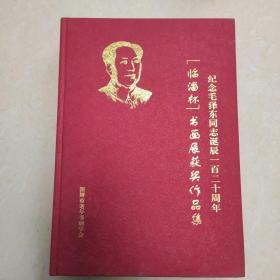
有限元法(第3卷.第5版)
幸福城3-5
¥ 200 八五品
仅1件
山东淄博
认证卖家担保交易快速发货售后保障
作者R.L.Taklor 著;O.C.Zienkiewicz
出版社世界图书出版公司
出版时间2005-04
版次1
装帧平装
上书时间2024-07-13
- 在售商品 暂无
- 平均发货时间 21小时
- 好评率 暂无
- 店主推荐
- 最新上架
商品详情
- 品相描述:八五品
图书标准信息
- 作者 R.L.Taklor 著;O.C.Zienkiewicz
- 出版社 世界图书出版公司
- 出版时间 2005-04
- 版次 1
- ISBN 9787506265492
- 定价 56.00元
- 装帧 平装
- 开本 其他
- 纸张 胶版纸
- 页数 334页
- 【内容简介】
- 这是一套在国际上颇具权威性的经典著作(共3卷),由有限元法的创始人zienkiewicz教授和美国加州大学TayIor教授合作撰写。本书初版于1967年,以后经过多次修订再版,深受力学界和工程界科技人员的欢迎。本套书的特点是理论可靠,内容全面,既有基础理论,又有其具体应用。适用于计算力学、力学、土木、水利、机械、航天航空等领域的专家、教授、工程技术人员和研究生。
- 【目录】
-
PreJace to Volume
1 Introduction and the equations of fluid dynamics
1.1 General remarks and classification of fluid mechanics problems discussed in this book
1.2 The governing equations of fluid dynamics
1.3 Incompressible (or nearly incompressible) flows
1.4 Concluding remarks
References
2 Convection dominated problems - finite element approximations to the convection-diffusion equation
2.1 Introduction
2.2 The steady-state problem in one dimension
2.3 The steady-state problem in two (or three) dimensions
2.4 Steady state - concluding remarks
2.5 Transients - introductory remarks
2.6 Characteristic-based methods
2.7 Taylor-Galerkin procedures for scalar variables
2.8 Steady-state condition
2.9 Non-linear waves and shocks
2.10 Vector-valued variables
2.11 Summary and concluding remarks
References
3 A general algorithm for compressible and incompressible flows - the characteristic-based split (CBS) algorithm
3.1 Introduction
3.2 Characteristic-based split (CBS) algorithm
3.3 Explicit, semi-implicit and nearly implicit forms
3.4 Circumventing' the Babuska-Brezzi (BB) restrictions
3.5 A single-step version
3.6 Boundary conditions
3.7 The performance of two- and single-step algorithms on an inviscid problem
3.8 Concluding remarks
References
4 Incompressible laminar flow - newtonian and non-newtonian fluids
4.1 Introduction and the basic equations
4.2 Inviscid, incompressible flow (potential flow)
4.3 Use of the CBS algorithm for incompressible or nearly incompressible flows
4.4 Boundary-exit conditions
4.5 Adaptive mesh refinement
4.6 Adaptive mesh generation for transient problems
4.7 Importance of stabilizing convective terms
4.8 Slow flows - mixed and penalty formulations
4.9 Non-newtonian flows - metal and polymer forming
4.10 Direct displacement approach to transient metal forming
4.11 Concluding remarks
References
5 Free surfaces, buoyancy and tucbulent incompressible flows
5.1 Introduction
5.2 Free surface flows
5.3 Buoyancy driven flows
5.4 Turbulent flows
References
6 Compressible high-speed gas flow
6.1 Introduction
6.2 The governing equations
6.3 Boundary conditions - subsonic and supersonic flow
6.4 Numerical approximations and the CBS algorithm
6.5 Shock capture
6.6 Some preliminary examples for the Euler equation
6.7 Adaptive refinement and shock capture in Euler problems
6.8 Three-dimensional inviscid examples in steady state
6.9 Transient two and three-dimensional problems
6.10 Viscous problems in two dimensions
6.11 Three-dimensional viscous problems
6.12 Boundary layer-inviscid Euler solution coupling
6.13 Concluding remarks
References
7 Shallow-water problems
7.1 Introduction
7.2 The basis of the shallow-water equations
7.3 Numerical approximation
……
8 Waves
9 Computer implementation of the CBS algorithm
Appendix A:Non-conservative form of Navier-Stokes equations
Appendix B:Discontinuous Galerkin methods in the solution of the convection-diffusion equation
Appendix C:Edge-based finite element formulation
Appendix D:Multigrid methods
Appendix E:Boundary layer-inviscid flow coupling
Author index
Subject index
点击展开
点击收起
— 没有更多了 —

























以下为对购买帮助不大的评价